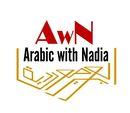|
Recently, I was asked an interesting question about how excerpts from the Qur’an can be used to teach students studying Arabic as a Foreign Language using Communicative Language Teaching methods. This blog entry aims to address this question. First, I will present some thoughts for consideration prior to inclusion of Qur’anic verses into Arabic programs. Secondly, I will offer suggestions for activities and tasks.
Inclusion of Qur’anic excerpts in Arabic programs; 1. Objectives for Arabic and Islamic subjects need to be different. Program developers should always keep their goals for the Arabic program distinct from their goals for Islamic subjects. More importantly, students, should be able to perceive that the goals of their Arabic subject are similar to the goals of their English language subjects and different to the goals of their Islamic subjects. Therefore, an Arabic program should not focus on memorization of verses and/or their recitation but should focus on the comprehension of the content of the verses when read and heard. Additionally, while Islamic subjects at schools introduce the Qur’an to young learners for recitation and memorization an Arabic program should not follow the same approach. 2. Careful selection of excerpts;
3. We should not teach to the excerpt but teach language and introduce an appropriate excerpt. In the same way that we should not be teaching to the test, we should not be teaching to the excerpt. Excerpts should be introduced after incremental learning of the target language items has occurred over a period of teaching and deemed acquired through coursework activities and/or assessment. Material could be slightly above the students' level but comprehension should not be contingent on teachers' translation. Possible classroom activities;
2 Comments
7/8/2018 07:33:15 am
السلام عليكم ورحمة الله
Reply
Leave a Reply. |
Author: NADIAArchives
April 2020
|

 RSS Feed
RSS Feed